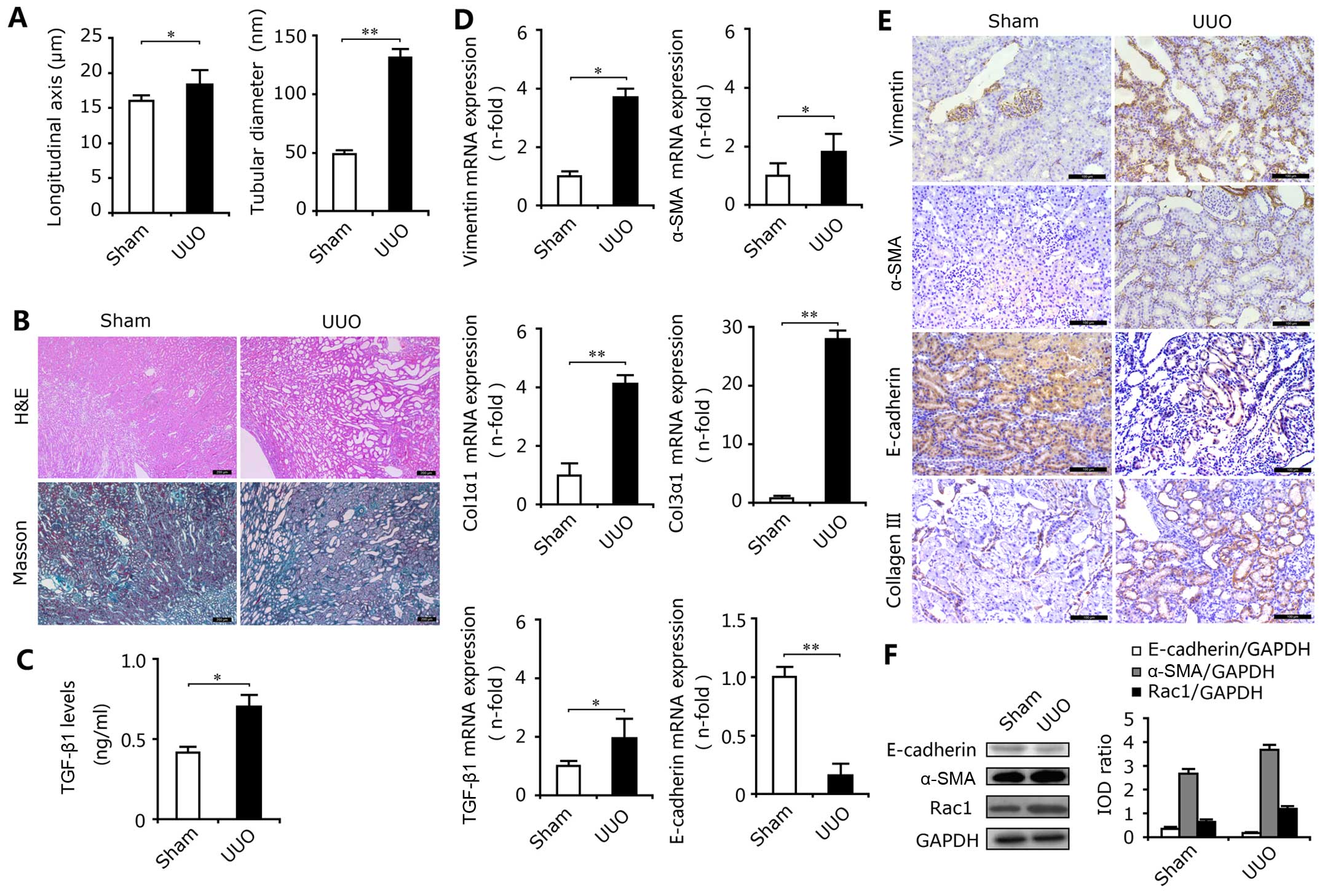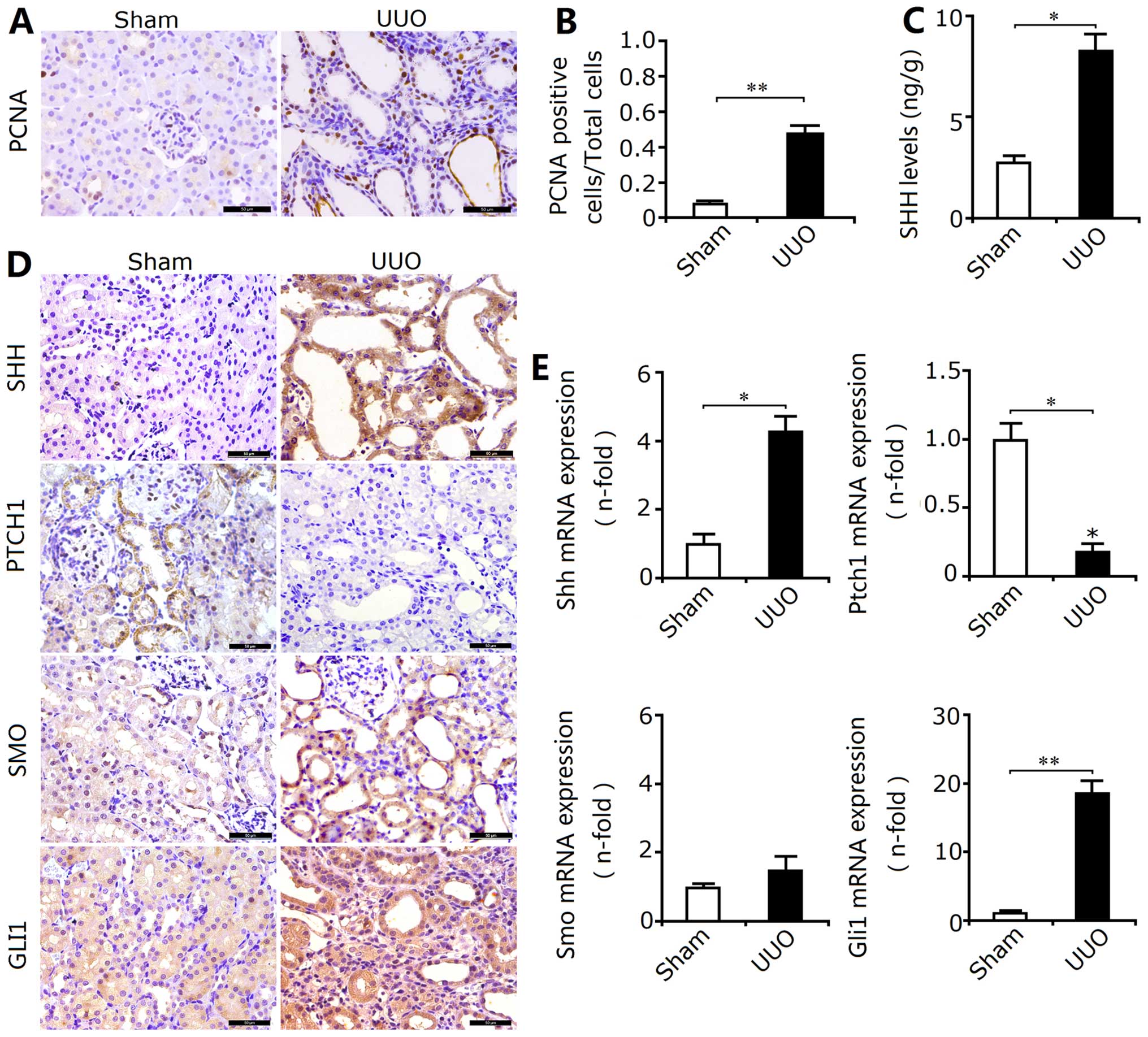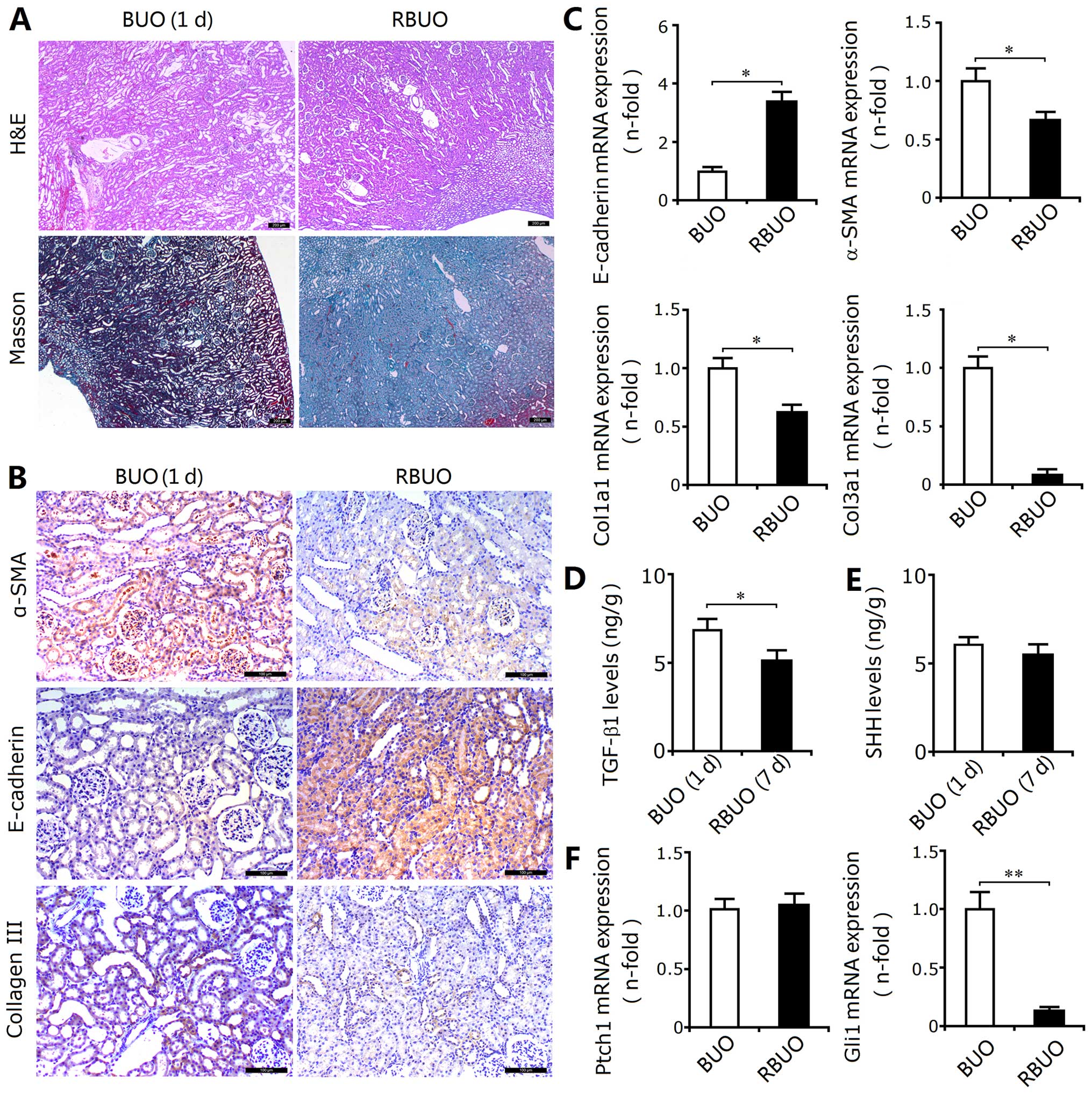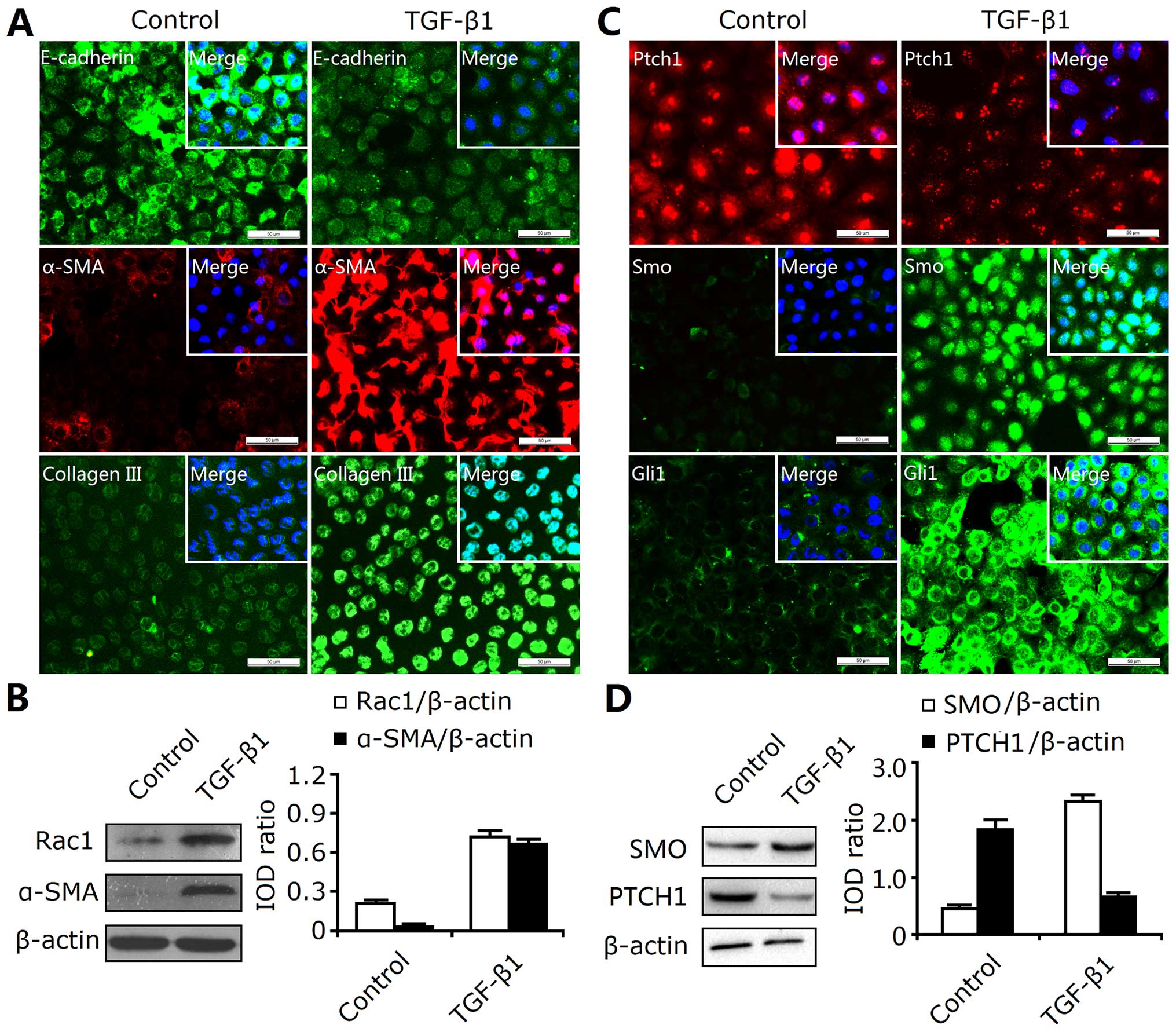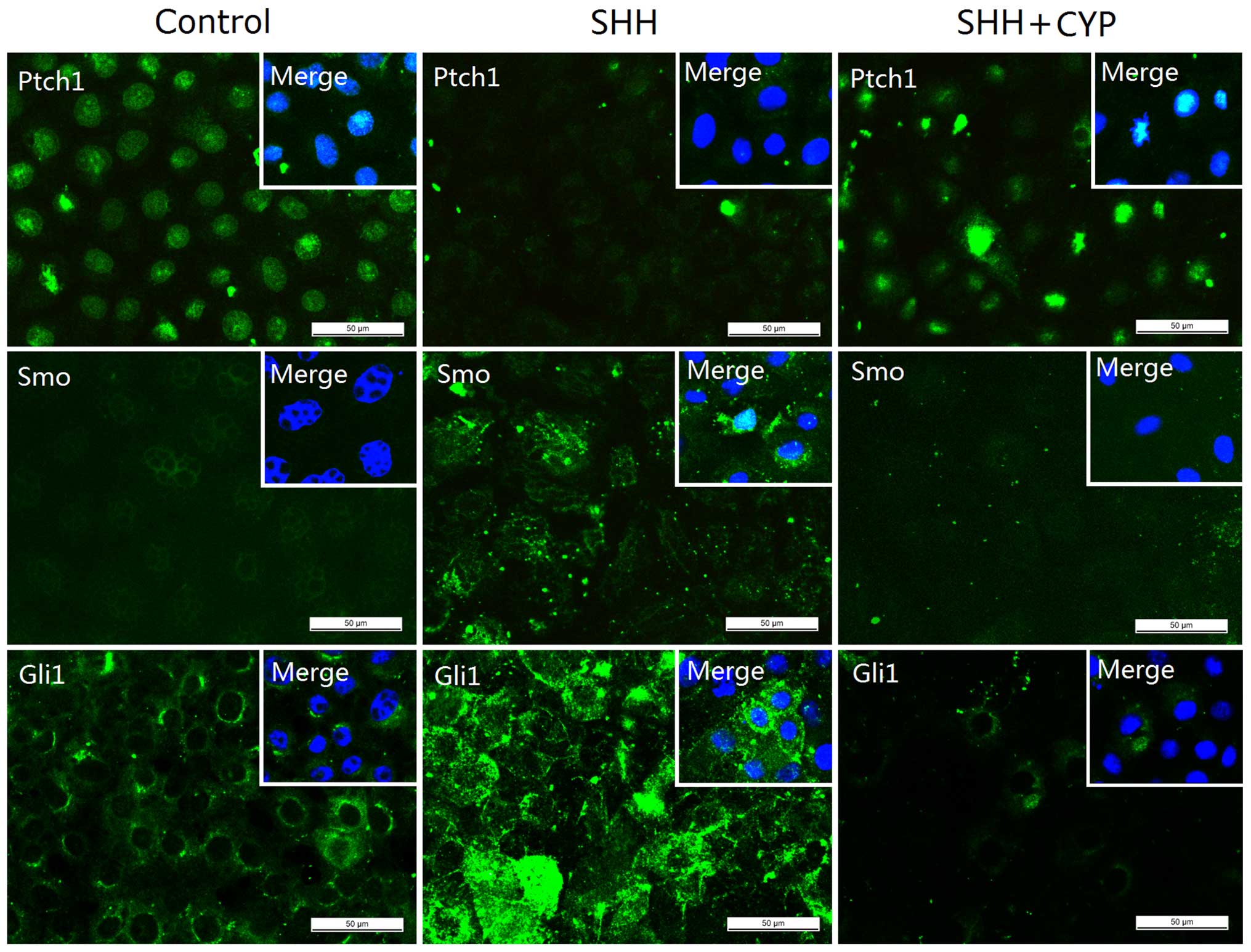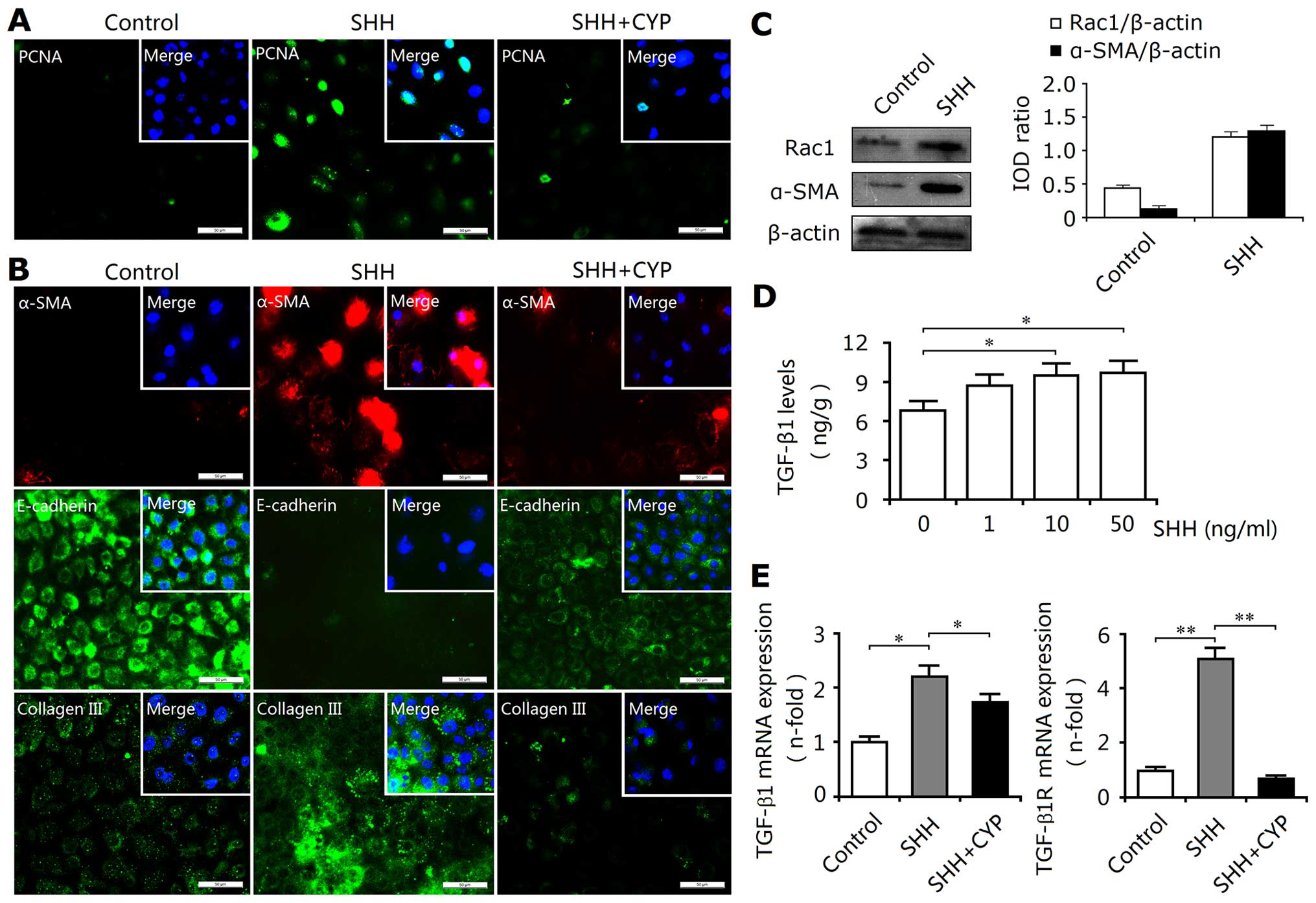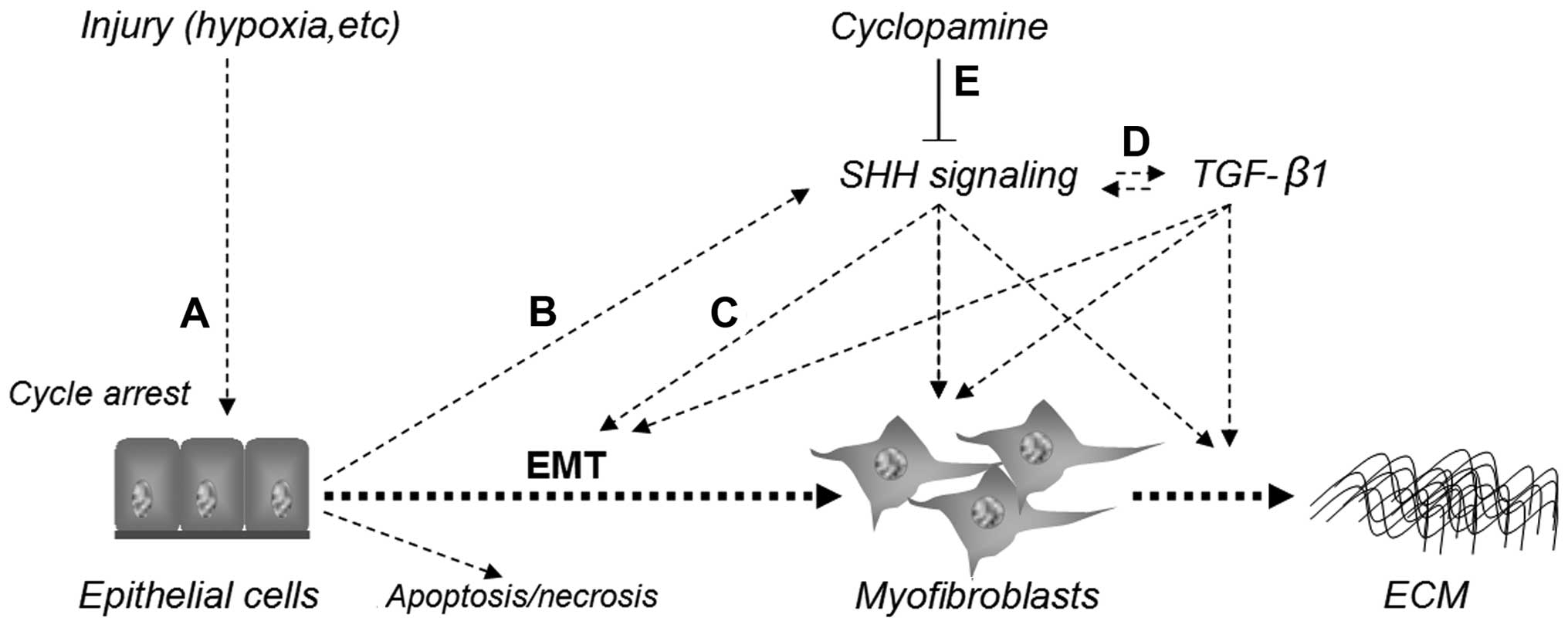|
1
|
Meran S and Steadman R: Fibroblasts and
myofibroblasts in renal fibrosis. Int J Exp Pathol. 92:158–167.
2011. View Article : Google Scholar : PubMed/NCBI
|
|
2
|
Vilayur E and Harris DC: Emerging
therapies for chronic kidney disease: what is their role? Nat Rev
Nephrol. 5:375–383. 2009. View Article : Google Scholar : PubMed/NCBI
|
|
3
|
Liu Y: Cellular and molecular mechanisms
of renal fibrosis. Nat Rev Nephrol. 7:684–696. 2011. View Article : Google Scholar : PubMed/NCBI
|
|
4
|
Liu Y: Epithelial to mesenchymal
transition in renal fibrogenesis: pathologic significance,
molecular mechanism, and therapeutic intervention. J Am Soc
Nephrol. 15:1–12. 2004. View Article : Google Scholar
|
|
5
|
Liu Y: New insights into
epithelial-mesenchymal transition in kidney fibrosis. J Am Soc
Nephrol. 21:212–222. 2010. View Article : Google Scholar
|
|
6
|
Saika S, Ikeda K, Yamanaka O, Flanders KC,
Ohnishi Y, Nakajima Y, Muragaki Y and Ooshima A: Adenoviral gene
transfer of BMP-7, Id2, or Id3 suppresses injury-induced
epithelial-to-mesenchymal transition of lens epithelium in mice. Am
J Physiol Cell Physiol. 290:C282–C289. 2006. View Article : Google Scholar
|
|
7
|
Zeisberg M, Hanai J, Sugimoto H, Mammoto
T, Charytan D, Strutz F and Kalluri R: BMP-7 counteracts
TGF-beta1-induced epithelial-to-mesenchymal transition and reverses
chronic renal injury. Nat Med. 9:964–968. 2003. View Article : Google Scholar : PubMed/NCBI
|
|
8
|
Bhardwaj G, Murdoch B, Wu D, Baker DP,
Williams KP, Chadwick K, Ling LE, Karanu FN and Bhatia M: Sonic
hedgehog induces the proliferation of primitive human hematopoietic
cells via BMP regulation. Nat Immunol. 2:172–180. 2001. View Article : Google Scholar : PubMed/NCBI
|
|
9
|
Ingham PW and McMahon AP: Hedgehog
signaling in animal development: paradigms and principles. Genes
Dev. 15:3059–3087. 2001. View Article : Google Scholar : PubMed/NCBI
|
|
10
|
Pasca di Magliano M and Hebrok M: Hedgehog
signalling in cancer formation and maintenance. Nat Rev Cancer.
3:903–911. 2003. View
Article : Google Scholar
|
|
11
|
Berman DM, Karhadkar SS, Maitra A, Montes
De Oca R, Gerstenblith MR, Briggs K, Parker AR, Shimada Y, Eshleman
JR, Watkins DN and Beachy PA: Widespread requirement for Hedgehog
ligand stimulation in growth of digestive tract tumours. Nature.
425:846–851. 2003. View Article : Google Scholar : PubMed/NCBI
|
|
12
|
Thayer SP, di Magliano MP, Heiser PW,
Nielsen CM, Roberts DJ, Lauwers GY, Qi YP, Gysin S, Fernández-del
Castillo C, Yajnik V, et al: Hedgehog is an early and late mediator
of pancreatic cancer tumorigenesis. Nature. 425:851–856. 2003.
View Article : Google Scholar : PubMed/NCBI
|
|
13
|
Omenetti A, Porrello A, Jung Y, Yang L,
Popov Y, Choi SS, Witek RP, Alpini G, Venter J, Vandongen HM, et
al: Hedgehog signaling regulates epithelial-mesenchymal transition
during biliary fibrosis in rodents and humans. J Clin Invest.
118:3331–3342. 2008.PubMed/NCBI
|
|
14
|
Syn WK, Jung Y, Omenetti A, Abdelmalek M,
Guy CD, Yang L, Wang J, Witek RP, Fearing CM, Pereira TA, et al:
Hedgehog-mediated epithelial-to-mesenchymal transition and
fibrogenic repair in nonalcoholic fatty liver disease.
Gastroenterology. 137:1478–1488.e8. 2009. View Article : Google Scholar : PubMed/NCBI
|
|
15
|
Hooper JE and Scott MP: Communicating with
hedgehogs. Nat Rev Mol Cell Biol. 6:306–317. 2005. View Article : Google Scholar : PubMed/NCBI
|
|
16
|
Bai Y, Lu H, Zhang G, Wu C, Lin C, Liang Y
and Chen B: Sedum sarmentosum Bunge extract exerts renal
anti-fibrotic effects in vivo and in vitro. Life Sci. 105:22–30.
2014. View Article : Google Scholar : PubMed/NCBI
|
|
17
|
Pat B, Yang T, Kong C, Watters D, Johnson
DW and Gobe G: Activation of ERK in renal fibrosis after unilateral
ureteral obstruction: modulation by antioxidants. Kidney Int.
67:931–943. 2005. View Article : Google Scholar : PubMed/NCBI
|
|
18
|
Katoh H, Hiramoto K and Negishi M:
Activation of Rac1 by RhoG regulates cell migration. J Cell Sci.
119:56–65. 2006. View Article : Google Scholar
|
|
19
|
Gill PS and Rosenblum ND: Control of
murine kidney development by sonic hedgehog and its GLI effectors.
Cell Cycle. 5:1426–1430. 2006. View Article : Google Scholar : PubMed/NCBI
|
|
20
|
Hu MC, Mo R, Bhella S, Wilson CW, Chuang
PT, Hui CC and Rosenblum ND: GLI3-dependent transcriptional
repression of Gli1, Gli2 and kidney patterning genes disrupts renal
morphogenesis. Development. 133:569–578. 2006. View Article : Google Scholar : PubMed/NCBI
|
|
21
|
Cain JE and Rosenblum ND: Control of
mammalian kidney development by the Hedgehog signaling pathway.
Pediatr Nephrol. 26:1365–1371. 2011. View Article : Google Scholar
|
|
22
|
Yu J, Carroll TJ and McMahon AP: Sonic
hedgehog regulates proliferation and differentiation of mesenchymal
cells in the mouse metanephric kidney. Development. 129:5301–5312.
2002.PubMed/NCBI
|
|
23
|
Ding H, Zhou D, Hao S, Zhou L, He W, Nie
J, Hou FF and Liu Y: Sonic hedgehog signaling mediates
epithelial-mesenchymal communication and promotes renal fibrosis. J
Am Soc Nephrol. 23:801–813. 2012. View Article : Google Scholar : PubMed/NCBI
|
|
24
|
Fabian SL, Penchev RR, St-Jacques B, Rao
AN, Sipilä P, West KA, McMahon AP and Humphreys BD: Hedgehog-Gli
pathway activation during kidney fibrosis. Am J Pathol.
180:1441–1453. 2012. View Article : Google Scholar : PubMed/NCBI
|
|
25
|
Borello U, Berarducci B, Murphy P, Bajard
L, Buffa V, Piccolo S, Buckingham M and Cossu G: The
Wnt/beta-catenin pathway regulates Gli-mediated Myf5 expression
during somitogenesis. Development. 133:3723–3732. 2006. View Article : Google Scholar : PubMed/NCBI
|
|
26
|
Daoud G, Kempf H, Kumar D, Kozhemyakina E,
Holowacz T, Kim DW, Ionescu A and Lassar AB: BMP-mediated induction
of GATA4/5/6 blocks somitic responsiveness to SHH. Development.
141:3978–3987. 2014. View Article : Google Scholar : PubMed/NCBI
|
|
27
|
Nakamura I, Fernandez-Barrena MG,
Ortiz-Ruiz MC, Almada LL, Hu C, Elsawa SF, Mills LD, Romecin PA,
Gulaid KH, Moser CD, et al: Activation of the transcription factor
GLI1 by WNT signaling underlies the role of SULFATASE 2 as a
regulator of tissue regeneration. J Biol Chem. 288:21389–21398.
2013. View Article : Google Scholar : PubMed/NCBI
|
|
28
|
Wynn TA: Fibrosis under arrest. Nat Med.
16:523–525. 2010. View Article : Google Scholar : PubMed/NCBI
|
|
29
|
Yang L, Besschetnova TY, Brooks CR, Shah
JV and Bonventre JV: Epithelial cell cycle arrest in G2/M mediates
kidney fibrosis after injury. Nat Med. 16:535–543, 1p following
143. 2010. View
Article : Google Scholar : PubMed/NCBI
|
|
30
|
Bai Y, Lu H, Hu L, Hong D, Ding L and Chen
B: Effect of Sedum sarmentosum Bunge extract on aristolochic
acid-induced renal tubular epithelial cell injury. J Pharmacol Sci.
124:445–456. 2014. View Article : Google Scholar : PubMed/NCBI
|
|
31
|
Tremblay MR, Lescarbeau A, Grogan MJ, Tan
E, Lin G, Austad BC, Yu LC, Behnke ML, Nair SJ, Hagel M, et al:
Discovery of a potent and orally active hedgehog pathway antagonist
(IPI-926). J Med Chem. 52:4400–4418. 2009. View Article : Google Scholar : PubMed/NCBI
|
|
32
|
Zhang X, Harrington N, Moraes RC, Wu MF,
Hilsenbeck SG and Lewis MT: Cyclopamine inhibition of human breast
cancer cell growth independent of Smoothened (Smo). Breast Cancer
Res Treat. 115:505–521. 2009. View Article : Google Scholar
|
|
33
|
Zhao C, Chen A, Jamieson CH, Fereshteh M,
Abrahamsson A, Blum J, Kwon HY, Kim J, Chute JP, Rizzieri D, et al:
Hedgehog signalling is essential for maintenance of cancer stem
cells in myeloid leukaemia. Nature. 458:776–779. 2009. View Article : Google Scholar : PubMed/NCBI
|



